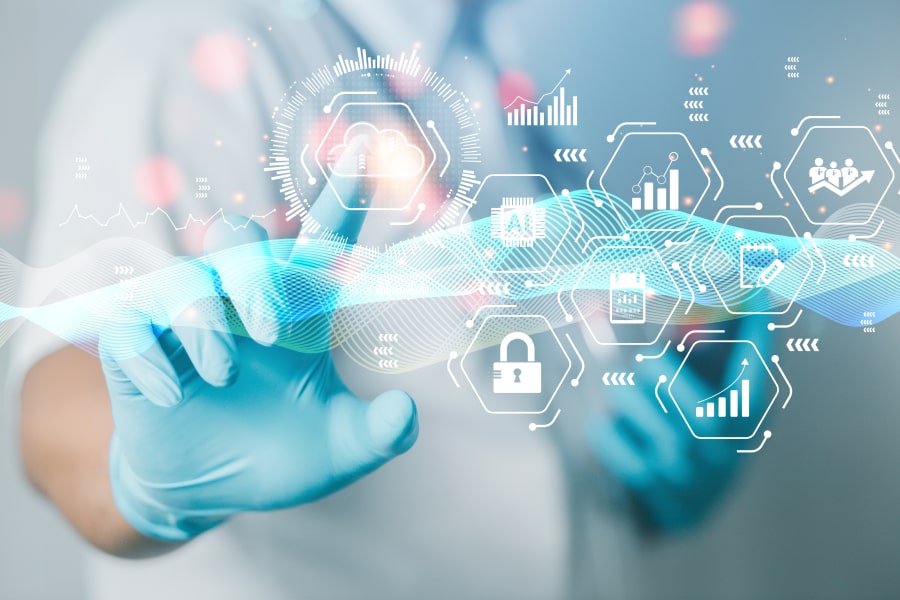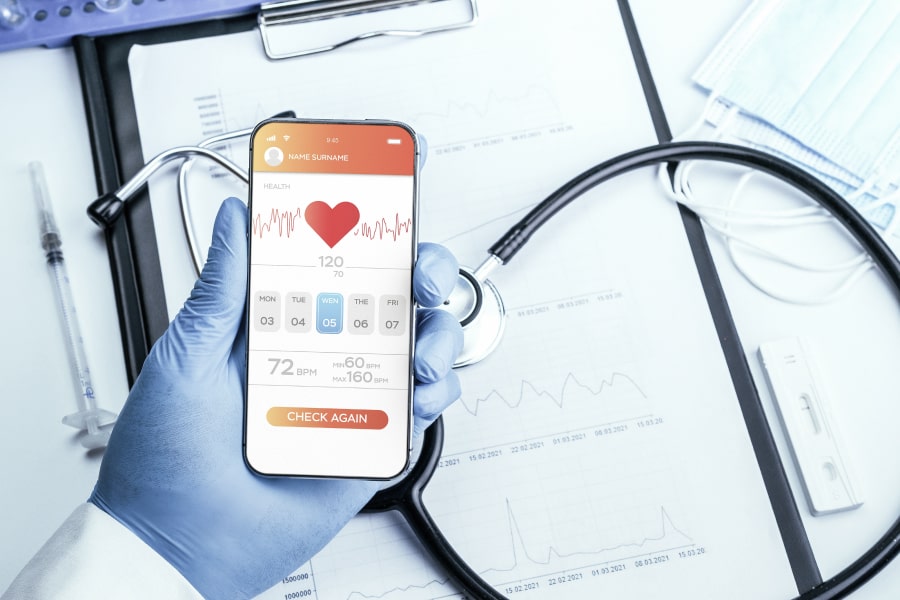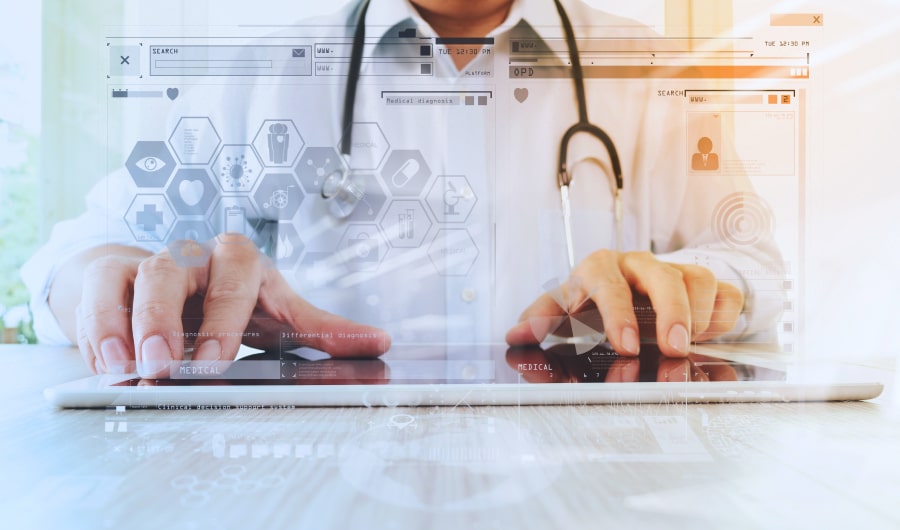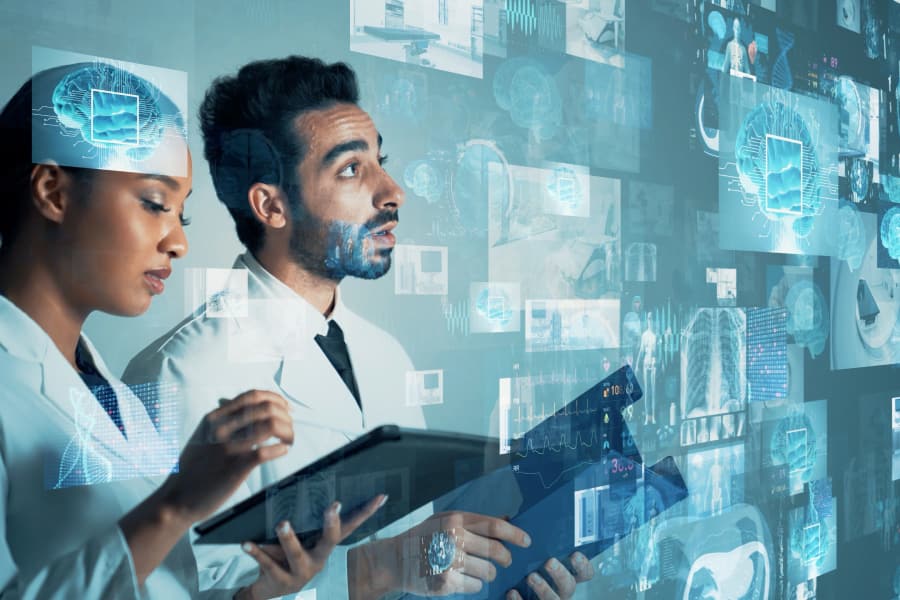Providing high-quality healthcare is a fundamental cornerstone of modern societies. Yet, the manner in which practitioners and patients interact is far from standardized. Cultural norms and traditional methods evolve gradually.
At present, people’s greatest concern is that their ailments are being diagnosed based upon big data and mathematical algorithms. Patients prefer to be thought of as individuals, and not numbers within statistical models.
Nevertheless, the wide-ranging use of digital data continues to encourage medical practitioners to consider the value of:
- Early detection,
- Lifestyle choices determination,
- Hereditary patterns and environmental factors influence.
By feeding these elements into the “diagnosis equation”, doctors and patients alike can consider a better range of potential treatments. Thus, more and more medical organizations are building healthcare solutions and embracing patient-centric application development.
What is a Patient-Centric Approach in Software Development?

Software for patient-centric care is based on the idea of providing medical services that cater to the needs, values, and preferences of each individual. These types of solutions empower patients to take a more active role in the management of their wellbeing. Thus, making all health-related endeavors more pleasant and leading to better treatment outcomes.
All in all, taking a patient-centric approach means listening to your patients, taking their concerns into account, and providing them with tools that make them feel more confident about how their health is managed. Sounds simple enough, but you’d be surprised how often medical professionals may overlook this.
Find out what else Providers Must Know About Patient-Centricity
Benefits of Patient-Centric Healthcare Software Solutions
Now that we have established what patient-centric software design implies, let’s get a bit more specific and look at the benefits of these solutions. Thanks to the widespread relevance of patient-centricity, both patients and healthcare professionals are bound to reap the rewards of this approach.
Advantages for Patients:
- Improved treatment results
- Smoother experience with medical providers
- Better understanding about own health
- Reduced need for in-person clinic visits
Advantages for Medical Professionals:
- More thoroughly informed treatment plans
- Higher levels of patient retention
- Lower rates of readmissions to the hospital
- Better differentiation from competitors
As you can see, there’s a multitude of reasons for you to begin designing your medical software with patient-centricity in mind. So, don’t postpone this undertaking and begin delivering better services as soon as possible.
Learn how to Design Truly Valuable Healthcare Software
Examples of Patient-Centric Application Development
Chances are, you’re eager to jump on the patient-focused bandwagon and implement solutions that will take you a step closer towards the provision of personalized medical care. Well, we’re happy to tell you there are at least five technologies that can help you in this endeavor. Let’s take a closer look at each one of them.
Cloud-Based Medical Tools

The 1996 Health Insurance Portability and Accountability Act (HIPAA) might have seemed, at the time, a surefire model for slowing down the speed and frequency of medical data exchange within computer networks. Yet, smart security, firewalls, storage redundancy needs and more have led to a multi-billion dollar industry that shows no sign of diminution, anytime soon.
Discover more about HIPAA-Compliant App Development
As you may know, reliable computer hardware infrastructure is the foundation of EMR (Electronic Medical Records). In parallel, the expansion of data accessibility via mobile devices, and the interoperability efficiencies among systems is experiencing tremendous growth.
Unsurprisingly, custom software development companies have sprung up to meet the insatiable appetite for inventors of medical devices and managers of healthcare records, seeking to connect their products and services to “The Cloud.”
In fact, cracking through the (invisible) fortress wall of secure, Cloud-based computing and data exchange is the gold standard for any modern-day software company.
After all, leaders in the field, from academics to profit-motivated hospitals understand the value of Cloud technology. Primarily because it ensures speed, reliability and rock-solid stability that incorporates disaster recovery as an equally strong link in the data chain. Naturally, this is immensely important for companies within the medical sphere who want to continuously deliver smooth services to patients.
Patient-Centric Wearables

The Fitbit company, founded a decade ago in San Francisco, California, is among the world pioneers in wearable technology that wirelessly calculates and communicates heart rates, calories, number of steps that are walked or climbed, etc.
Paired with apps that people use on smartphones and tablets, a social dimension has also been created, as people share goals and data with each other.
Rehab facilities leverage data collected from willing patients, who wear software-enabled fitness devices during in- and out-patient scenarios. The result is often shorter rehabilitation timeframes with lesser amounts of pain.
Likewise, surgeons collect data, in real-time, and for subsequent review, using devices that capture digital images, static & moving video.
Emergency Medical Service personnel, such as ambulance and paramedic teams, use body-mounted devices to capture on-scene data and gather quick research to aid decision-making.
Even the most tech-challenged populations purchase off-the-shelf equipment to measure symptoms and progress associated with back, knee and neck pain, as well as monitoring blood pressure, heart rate, glucose level, and more.
To summarize, the power of connected devices truly shouldn’t be understated. They play an immensely valuable role in modern healthcare and have the ability to skyrocket your patient-centricity.
Get more information on the Power of IoT and Connected Medical Devices
Medical Portals and mHealth Apps

Becoming an active participant in one’s own health is liberating; and the use of smartphone apps that are linked to online portals means that patients are more invested, at earlier stages, in their personal health stories.
When individuals have access to diagnostic tools, they don’t have to wait for their physician’s evaluation to see and understand how their health indicators are changing.
Unsurprisingly, this leads to a reduction in healthcare costs for patients who actively learn and utilize technologies that aid their personalized health management.
Additionally, the evolving use of medical portals and mHealth apps allows for a smooth set up of appointment and medication reminders, creation of searchable databases of medical advice and treatment options, and plenty of other opportunities to give the power into the hands of the patient.
Find out more about Mobile App Development in Healthcare
IoT-Powered Software

The World Wide Web, an endless source of information (sometimes dubious, sometimes immensely helpful, and sometimes downright magical), has been evolving since “surfing the Internet”, a phrase coined by Mark McCahill, known as the Gopher protocol father, became a thing.
The most important Darwinian turn has been the IoT (Internet of Things) or IoMT (the “M” is for “Medical”).
Simply stated, doctors, healthcare administrative staff, and patients alike are all interconnected via Web-enabled devices.
According to Frost & Sullivan, a company dedicated to aiding its clientele in achieving positive transformational growth, while in the throes of rapidly changing technological environments, almost sixty percent of Healthcare organizations have embraced IoMT devices. And they’re not doing it for their health. Rather, they have recognized increased visibility to patients for whom they can provide better care at lesser costs.
This win-win scenario, however, contains negative aspects. Inherently, this new paradigmatic shift brings anxiety about the volume of data being exchanged, and its possible disruption and “glitches”. As such, some are embracing blockchain technology in healthcare to help protect valuable information.
Read up on how we used Blockchain to Protect Clinics from Security Breaches
Patient health is of paramount concern in the IoMT world. However, developers can become superstars when their work also tracks and manages expensive medical equipment assets: diagnostic and MRI imaging machines, biomedical testing devices, Computerized Axial Tomography (CAT) and vital-sign monitors, ultrasound displays, etc.
Thus, custom healthcare software developers must properly balance:
- Increased productivity of medical staff
- Proper access to robotic and touch-screen tools for hospital and virtual home assistants
- Revenue generation through the efficient use of equipment.
Telemedicine Solutions

Though the field of telemedicine is nearly fifty years old, the last ten years of IT development have revolutionized healthcare in a dramatic way.
Whether patients are bed-bound, or simply home-bound, any physical distance between hospitals, clinics, and physicians’ offices has been eradicated via the use of telemedicine.
City-dwellers and rural residents alike have found that the Internet is a great equalizer when it comes to consistent and regular access to the same high-quality medical personnel.
Video chat software such as Google Hangouts, WebEx, UberConference and Skype offer free – or moderately priced – access to all participants. Even Apple’s iPhones, iPads, and Macs enable “FaceTime” software technology that facilitates real-time audio and video calls. As well, medical consultations are occurring regularly via virtual call-centers, wherein multiple representatives can participate from different places.
Starting Your Patient-Centric Journey
As you can see, there’s a myriad of opportunities for creating software that places patients at its center. Additionally, there’s no shortage of benefits for you to reap from pursuing this type of a project.
The demand for custom healthcare software development services is quite high, and there are no signs of it diminishing in the near future. However, selecting the right vendor with HIPAA compliance and a positive experience of implementing healthcare systems can become a challenge.
You’ll be pleased to know that Velvetech has carried out several healthcare and pharma-related projects related projects in recent years, laying down a solid ground of expertise for any of your requests. So, don’t hesitate to let us know the issues you are facing in your medical practice, and we will be happy to assist.






























